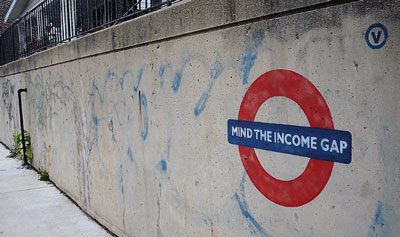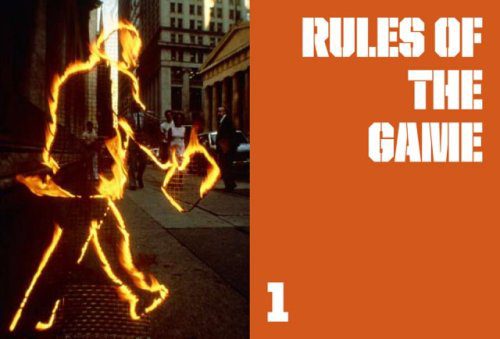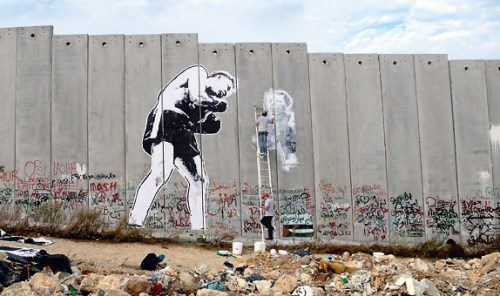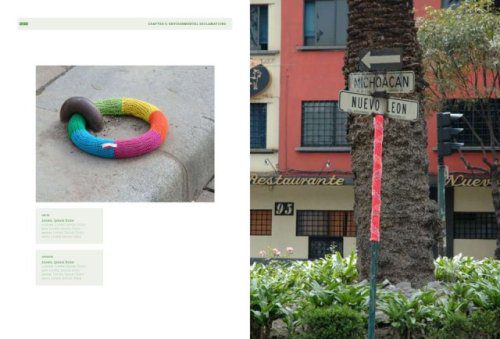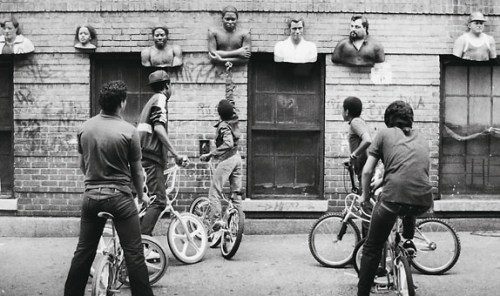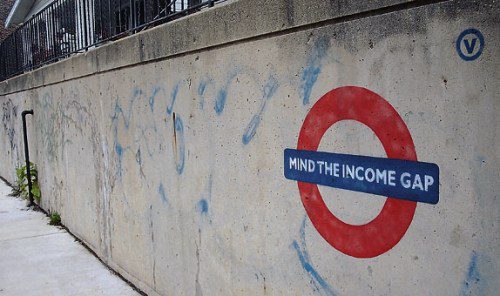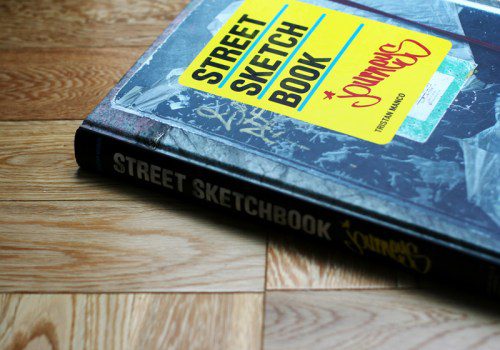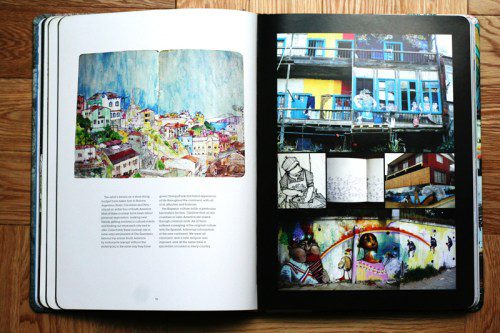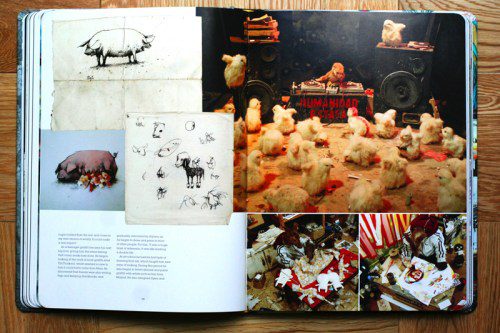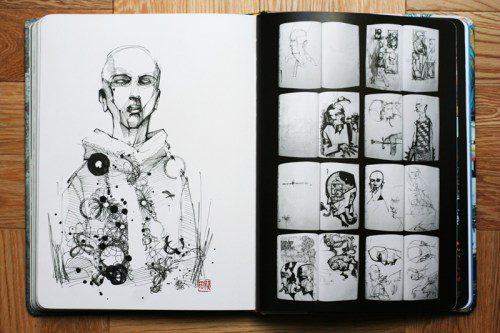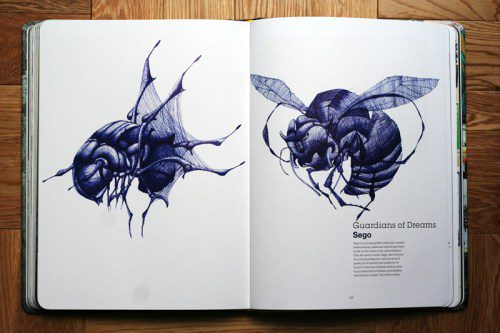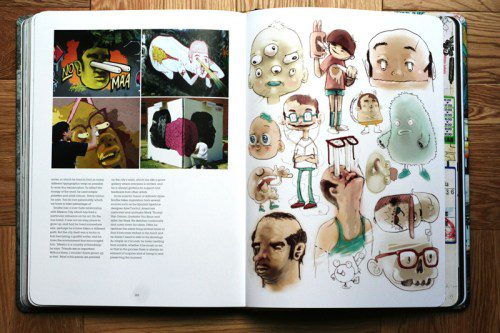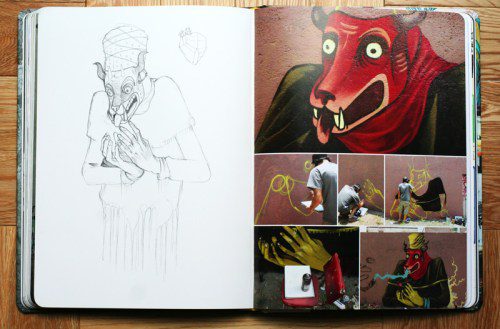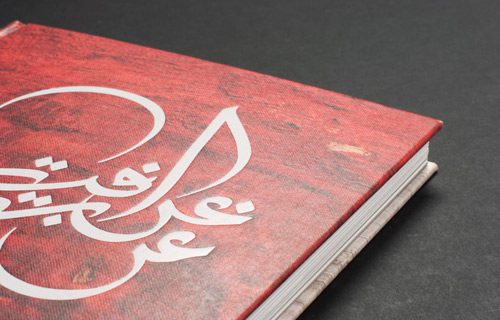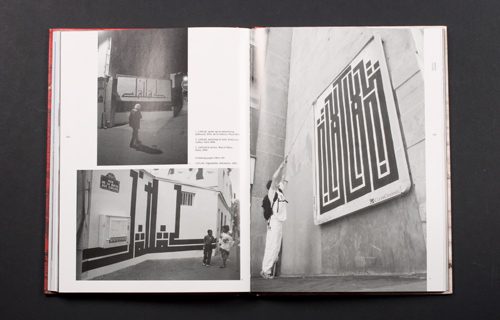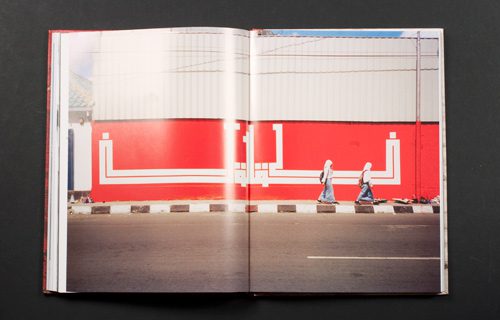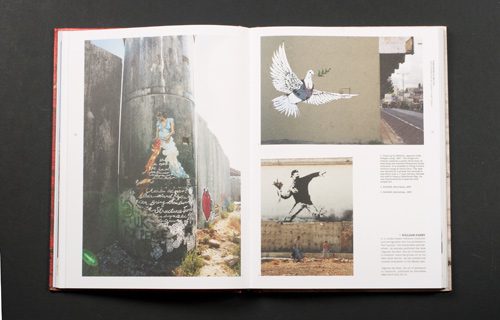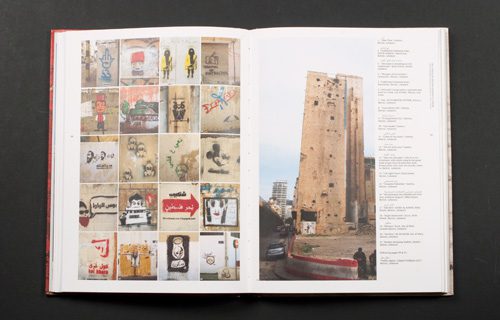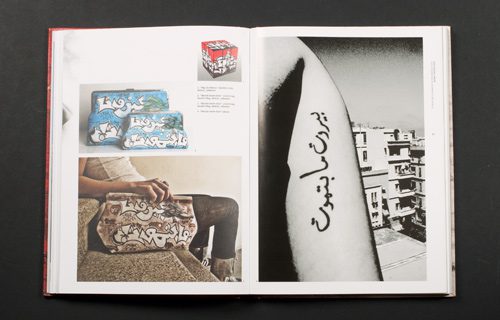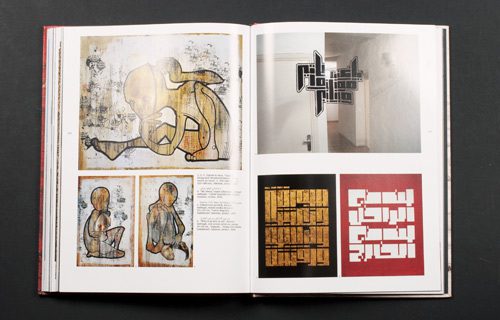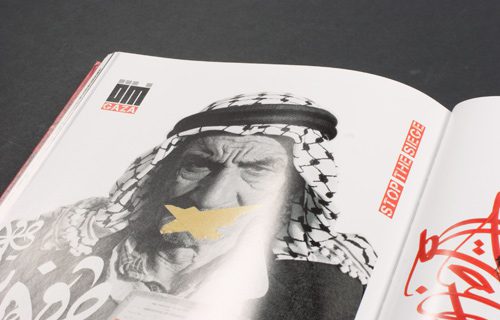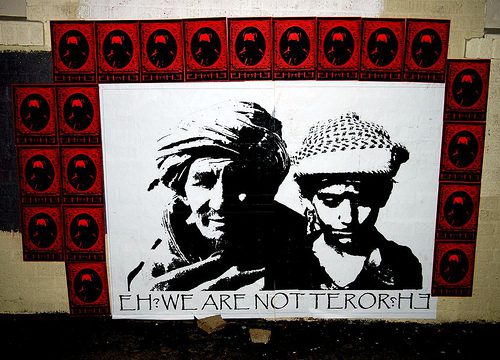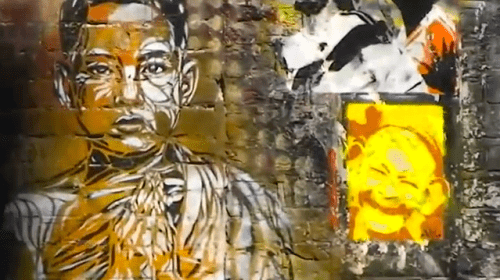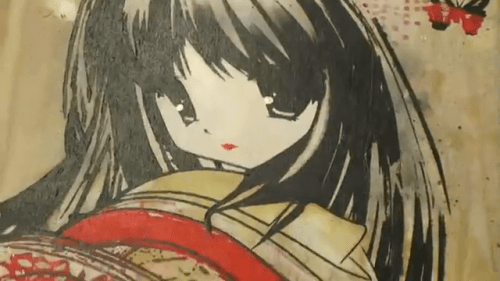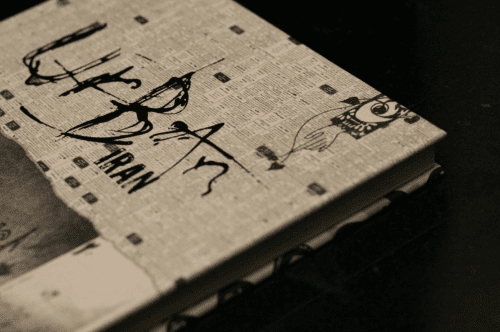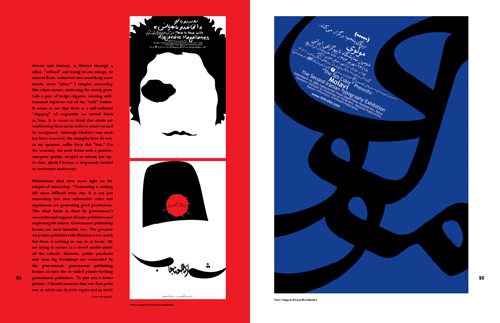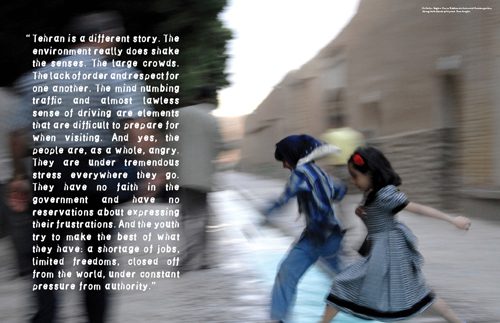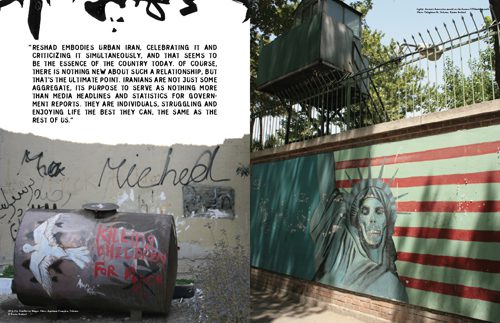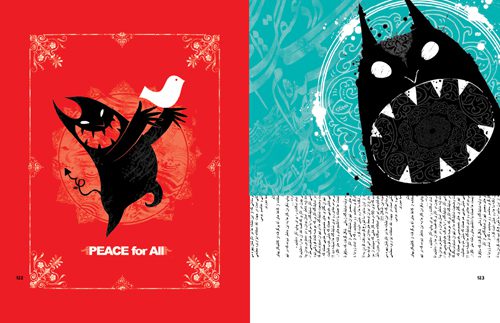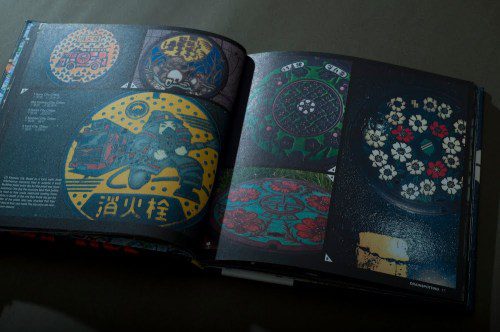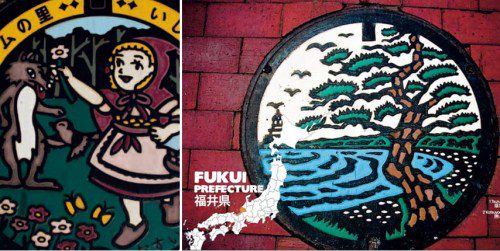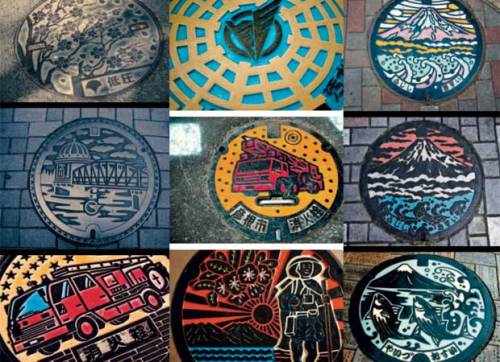Street art is a frequent fascination around here. Today, we turn to seven stunning, intelligent books that examine street art from a variety of angles, from the artistic to the sociocultural to the political and beyond, to glean holistic understanding of the ubiquitous, important but often misunderstood medium for public dialogue and civic self-expression.
 TRESPASS
TRESPASS
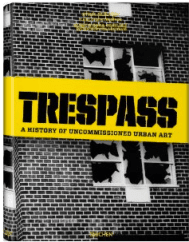 WoosterCollective is among the most authoritative blogs on street art. Last fall, its founders, Marc and Sara Schiller, poured years’ worth of expertise and insight into Trespass: A History Of Uncommissioned Urban Art — a gorgeous and thoughtful anthology that covers everything from Guatemalan guerrilla gardeners to icons like Banksy and Barry McGee that’s as much an exhaustive compendium of compelling artwork as it is a modern manifesto for activism, democracy and freedom of speech. And since the lavish 320-page volume comes from Taschen, easily the most visually ambitious publisher today, it’s an absolute treat for the eye.
WoosterCollective is among the most authoritative blogs on street art. Last fall, its founders, Marc and Sara Schiller, poured years’ worth of expertise and insight into Trespass: A History Of Uncommissioned Urban Art — a gorgeous and thoughtful anthology that covers everything from Guatemalan guerrilla gardeners to icons like Banksy and Barry McGee that’s as much an exhaustive compendium of compelling artwork as it is a modern manifesto for activism, democracy and freedom of speech. And since the lavish 320-page volume comes from Taschen, easily the most visually ambitious publisher today, it’s an absolute treat for the eye.
What makes Trespass different from other street art books is that it’s not a street art book. It’s a book that certainly includes street art and graffiti but goes beyond that to also address performance, protest, sculpture, and the whole goal of the book was to really look at the context of street art in a much larger historical perspective.” ~ Marc Schiller
Originally reviewed, with video, here.
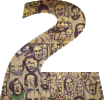 STREET SKETCHBOOK
STREET SKETCHBOOK
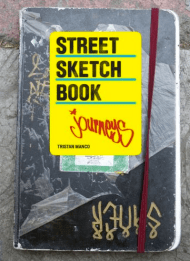 One of street art’s most characteristic features is that it’s so fundamentally public and in-your-face. But what goes into the private creative process of a street artist? That’s exactly what Tristan Manco examines in Street Sketchbook: Journeys, the follow-up to his 2007 Street Sketchbook: Inside the Journals of International Street and Graffiti Artists — a rare peek inside the sketchbooks of 26 of the world’s hottest new artists, and one of our 5 voyeuristic peeks inside the notebooks of cross-disciplinary creators.
One of street art’s most characteristic features is that it’s so fundamentally public and in-your-face. But what goes into the private creative process of a street artist? That’s exactly what Tristan Manco examines in Street Sketchbook: Journeys, the follow-up to his 2007 Street Sketchbook: Inside the Journals of International Street and Graffiti Artists — a rare peek inside the sketchbooks of 26 of the world’s hottest new artists, and one of our 5 voyeuristic peeks inside the notebooks of cross-disciplinary creators.
Originally reviewed, with more images, here.
 ARABIC GRAFFITI
ARABIC GRAFFITI
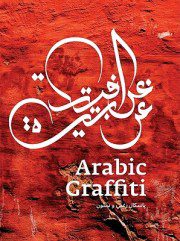 It’s no secret that the the majority of street art coverage in the media, from blogs to books to films, has a severe geographic bias, with a tendency to focus on Western lettering and imagery. Arabic Graffiti is a breath of fresh Eastern air in the global dialogue on street art. The ambitious anthology by Berlin street culture tastemaker Don Karl and Lebanese typographer Pascal Zoghbi explores the use of Arabic script in urban context, curating graffiti artists and typographers from the Middle East and around the world who incorporate Arabic calligraphy styles in their artwork — a beautiful intersection of tradition and contemporary creativity.
It’s no secret that the the majority of street art coverage in the media, from blogs to books to films, has a severe geographic bias, with a tendency to focus on Western lettering and imagery. Arabic Graffiti is a breath of fresh Eastern air in the global dialogue on street art. The ambitious anthology by Berlin street culture tastemaker Don Karl and Lebanese typographer Pascal Zoghbi explores the use of Arabic script in urban context, curating graffiti artists and typographers from the Middle East and around the world who incorporate Arabic calligraphy styles in their artwork — a beautiful intersection of tradition and contemporary creativity.
Part cultural anthropology, part study in creative ingenuity, Arabic Graffiti is also a timely and needed cross-cultural bridge of visual communication in the context of today’s global political climate. (For more on the subject, see the fantastic Cultural Connectives.)
Originally reviewed, with more images, here.
 STREET WORLD
STREET WORLD
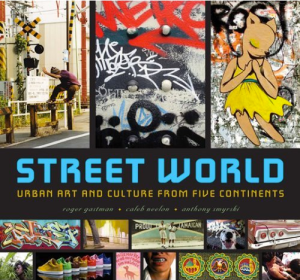 What makes street art so fascinating is that it isn’t an isolated discipline — rather, it’s the confluence of a myriad cultural phenomena, offers commentary on countless social issues, and borrows inspiration from a multitude of other creative domains. In Street World: Urban Art and Culture from Five Continents (which you might recall from this old piece on Beautiful Losers, the excellent documentary about contemporary street art culture), Roger Gastman, Caleb Neelon and Anthony Smyrski examine street art culture from a holistic standpoint, as it relates to other forms of urban expression — skateboarding, bike messengering, DJing, fashion, gang politics, music, design, photography — and explore how the advent of the Internet has fostered a new global street culture in less than a generation. From New York’s back-alleys to Brazil’s mega-cities to South Africa’s townships, the hefty tome is divided into more than 50 topics, each illustrated with dozens of photographs.
What makes street art so fascinating is that it isn’t an isolated discipline — rather, it’s the confluence of a myriad cultural phenomena, offers commentary on countless social issues, and borrows inspiration from a multitude of other creative domains. In Street World: Urban Art and Culture from Five Continents (which you might recall from this old piece on Beautiful Losers, the excellent documentary about contemporary street art culture), Roger Gastman, Caleb Neelon and Anthony Smyrski examine street art culture from a holistic standpoint, as it relates to other forms of urban expression — skateboarding, bike messengering, DJing, fashion, gang politics, music, design, photography — and explore how the advent of the Internet has fostered a new global street culture in less than a generation. From New York’s back-alleys to Brazil’s mega-cities to South Africa’s townships, the hefty tome is divided into more than 50 topics, each illustrated with dozens of photographs.
 STREET KNOWLEDGE
STREET KNOWLEDGE
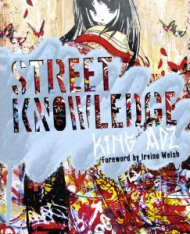 Today, street art is so ubiquitous it’s easy to forget it’s a fairly nascent form of urban dialogue. But where did it begin and how did it make its way around the world? That’s exactly what King Adz explores in Street Knowledge — a fascinating encyclopedia and insider’s guide to street art culture around the world, tracing the evolution of the movement from its groundbreaking days in 1980’s New York to the bleeding-edge work of modern-day Middle Eastern artists. From old-school graffiti legends to modern street art icons, including film-makers, designers, DJ’s, writers and poets, the book reveals the deep and lateral propagation of street art across just about every aspect of contemporary culture.
Today, street art is so ubiquitous it’s easy to forget it’s a fairly nascent form of urban dialogue. But where did it begin and how did it make its way around the world? That’s exactly what King Adz explores in Street Knowledge — a fascinating encyclopedia and insider’s guide to street art culture around the world, tracing the evolution of the movement from its groundbreaking days in 1980’s New York to the bleeding-edge work of modern-day Middle Eastern artists. From old-school graffiti legends to modern street art icons, including film-makers, designers, DJ’s, writers and poets, the book reveals the deep and lateral propagation of street art across just about every aspect of contemporary culture.
From interviews with some of world’s most influential street art talent, including Banksy, Quik, Shepard Fairey and the Obey crew, Martha Cooper, David LaChapelle and Tony Kaye, to profiles of up-and-comers from across the globe, Street Knowledge also places the featured street art in the context of the cities where it appears, doubling as an underground guide to the hottest art, culture, music, fashion, dining and film spots in some of the world’s most exciting cities.
Originally reviewed last year.
 URBAN IRAN
URBAN IRAN
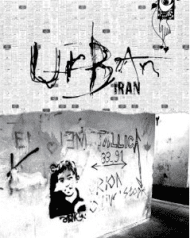 In 2008, our friends at Mark Batty released the excellent Urban Iran — a gripping, visually stunning anthology by photographers Karan Rashid and Sina Araghi exploring the rich spectrum of street art across Iran’s cities and countryside.
In 2008, our friends at Mark Batty released the excellent Urban Iran — a gripping, visually stunning anthology by photographers Karan Rashid and Sina Araghi exploring the rich spectrum of street art across Iran’s cities and countryside.
Alongside the lavish visual spreads are illuminating essays that examine the artwork in a sociopolitical context, bridging this faceted visual landscape with the cultural undercurrents that power it.
What makes the project particularly intriguing is that it came mere months before the 2009 Iranian uprisings, but the content and context of the street art themes featured in the book — censorship, rebellion, political disillusionment, a yearning for justice and democracy — presage what was to come.
Originally reviewed, with more images, here.
 DRAINSPOTTING
DRAINSPOTTING
 Street art is considered a subculture in and of itself, but the fact remains that it’s divisible into a great diversity of subgenres itself. Among the most fascinating is Japan’s unusual style of manhole cover graffiti, cataloged in Drainspotting — a stunning photographic anthology of the remarkable street art gems found across nearly 95% of the country’s 1780 municipalities. With their bold colors and dramatic motifs, from doves to dragons, the book’s 100 photographs capture the best and most visually compelling of Japan’s 6000 distinct manhole cover designs, part of a 20-year beautification program, orchestrated by what’s essentially Japan’s version of the WPA, aiming to make manholes reflect the uniqueness of each city — its mythology, its aesthetic sensibility, its legacy and essence.
Street art is considered a subculture in and of itself, but the fact remains that it’s divisible into a great diversity of subgenres itself. Among the most fascinating is Japan’s unusual style of manhole cover graffiti, cataloged in Drainspotting — a stunning photographic anthology of the remarkable street art gems found across nearly 95% of the country’s 1780 municipalities. With their bold colors and dramatic motifs, from doves to dragons, the book’s 100 photographs capture the best and most visually compelling of Japan’s 6000 distinct manhole cover designs, part of a 20-year beautification program, orchestrated by what’s essentially Japan’s version of the WPA, aiming to make manholes reflect the uniqueness of each city — its mythology, its aesthetic sensibility, its legacy and essence.
 The cherry on top? There’s also a Drainspotting iPad app, a beautiful homage to the classic Japanese intersection of art and technology. The app uses geolocation, inviting users to drainspot Japan, scavenger-hunt-style, and discover more examples of this unique visual subculture that didn’t make the book.
The cherry on top? There’s also a Drainspotting iPad app, a beautiful homage to the classic Japanese intersection of art and technology. The app uses geolocation, inviting users to drainspot Japan, scavenger-hunt-style, and discover more examples of this unique visual subculture that didn’t make the book.
Originally featured here last spring.


